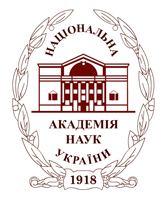 bv.nbuv.gov.ua
bv.nbuv.gov.ua
ISSN 1029-7200 (print)
ISSN 2948-0183 (online)
Bibliotechnyi visnyk
ARCHIVE (All issues) / ![]() Content (2020, Issue 6)
Content (2020, Issue 6)![]()
![]()
Kubko Anastasiia Scientometric Dimensions of Epidemic. Part One. World Trends of Pre-COVID-19 EraAbstract: Actuality. Epidemics that strain on local and global medical sectors, have long allowed bibliometrics and scientometrics specialists to identify and evaluate trends in which academic society responds to stress. Studies of epidemics (H1N1 influenza, Zika and Ebola viruses, and coronavirus diseases with acute respiratory distress syndrome (SARS and MERS)), which have occurred over the past twenty years, revealed trends and tendencies in the publishing activity of scientists, in the dynamics of citations, in the internal trends of the distribution of publishing activity in the medical science brunches and in the involvement of institutions in the scientific process. The aim of the article is to identify and summarize the trends of stress dynamics of bibliometric and scientometric indicators in response to the epidemic in the materials of Western researches, and to analyze their ability to act as components of the universal pattern of the academic community's response to challenges. Results. According to the results of Western researches, trends in academic community's output are as follows: general increase of publishing activity of scientists belonging to the branches of medical science involved in overcoming the epidemic; a constant annual average increase among new research in the field of infectious diseases; intra-industry distribution of publications with an internal trend of more significant growth of publications on the topic of sanitary and epidemiological safety (health care); identification of the leading institutions that responded most actively to the epidemic, among which the first three ones are the Centers for Disease Control and Prevention of the United States, WHO and the Chinese Center for Disease Control and Prevention. Conclusions. The analysis of the obtained data revealed that the lack of pandemic nature (ie their ability to spread to the whole world, not to certain countries) of epidemics in the last twenty years does not allow to use these trends as a general model of academic response to stress because they reflect trends only among the affected regions. At the same time, research based on data collected during the current COVID-19 coronavirus epidemic, which now covers equally the entire world, can be used to refine trends from previous decades and to establish a universal pattern of the scientific community's response to critical challenges. Keywords: scientometrics, bibliometric indicators, medicine, COVID-19. Author(s) citation:
Cite: References:
|